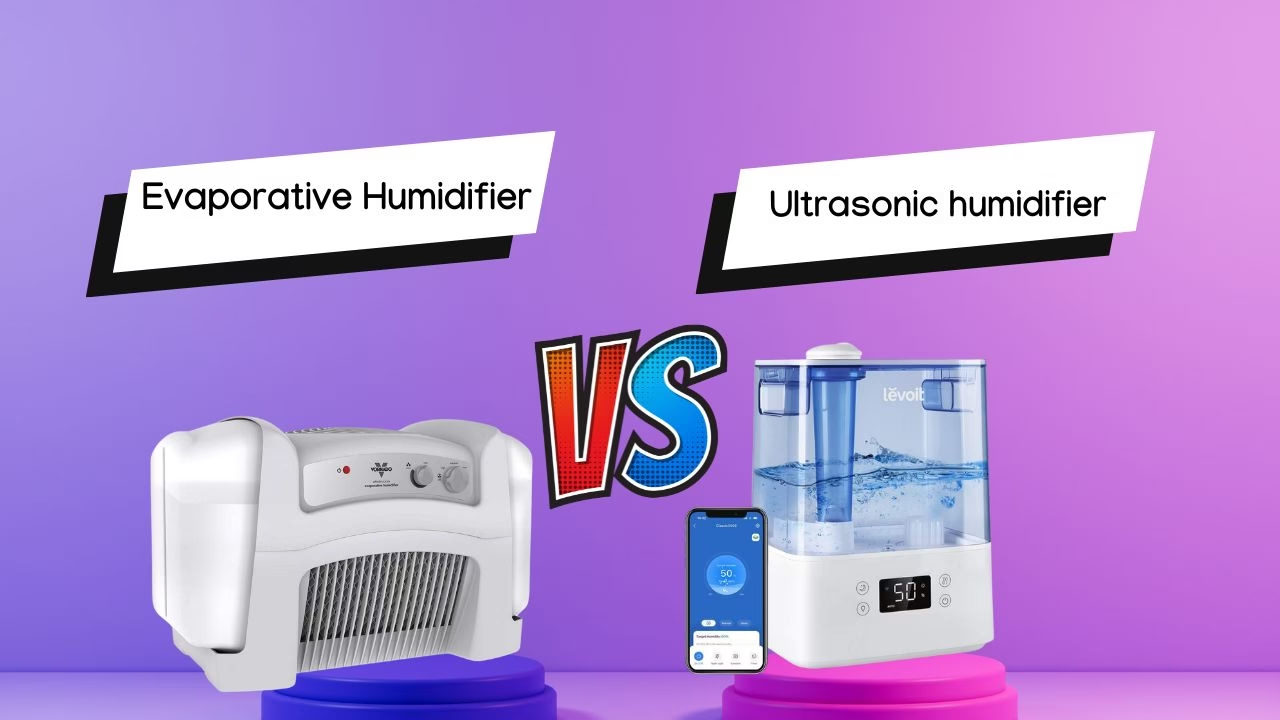Maintaining the right humidity in your home is essential for comfort and health. Humidifiers help by adding moisture to the air, which can alleviate dry skin and respiratory issues. Two popular types are evaporative and ultrasonic humidifiers. This review guide will explain how each works, their advantages and disadvantages, and provide tips on maintenance to help you choose the best option for your needs.
Importance of Humidifiers
Dry air can lead to problems like dry skin, sore throats, and even damage wooden furniture. Humidifiers add moisture to the air, making your home more comfortable and protecting your belongings.
Best Selling Humidifiers On Amazon
How Evaporative Humidifiers Work
Evaporative humidifiers use a simple process to add moisture to the air. They consist of a water tank, a wick (a filter that absorbs water), and a fan. The fan blows air through the wet wick, and as the air passes through, it picks up moisture and releases it into the room. This natural process helps prevent over-humidification.
Pros of Evaporative Humidifiers
- Self-Regulating: They naturally stop adding moisture when the air reaches a certain humidity level, reducing the chance of over-humidification.
- Affordable: These humidifiers often have a lower initial cost.
- No White Dust: They don’t release minerals into the air, so you won’t find white dust on your furniture.
Cons of Evaporative Humidifiers
- Noise: The fan can be noisy, which might be disruptive for some people.
- Regular Maintenance: The wick filter needs to be replaced regularly to ensure cleanliness and efficiency.
- Size: They can be bulkier and less aesthetically pleasing compared to other types.
How Ultrasonic Humidifiers Work
Ultrasonic humidifiers use high-frequency vibrations to create a fine mist of water droplets, which is then released into the air. This method allows them to operate very quietly, making them a popular choice for bedrooms and offices.
Pros of Ultrasonic Humidifiers
- Quiet Operation: They operate almost silently, which is ideal for light sleepers or quiet environments.
- Energy Efficient: These models consume less electricity, leading to energy savings.
- Compact Design: Many have sleek, modern designs that blend well with home decor.
Cons of Ultrasonic Humidifiers
- White Dust: They can disperse minerals from tap water into the air, leaving white dust on surfaces.
- Over-Humidification Risk: Without proper controls, they might add too much moisture to the air.
- Water Quality Matters: Using tap water can release impurities into the air; using distilled water is recommended.
You may also like: levoit humidifier 200s vs 300s Review
Maintenance Tips for Humidifiers
Proper maintenance is crucial to ensure your humidifier functions effectively and safely.
- Regular Cleaning: Clean your humidifier every three days to prevent mold and bacteria growth.
- Daily Water Change: Empty and refill the tank daily with fresh water.
- Filter Replacement: For evaporative models, replace the wick filter as recommended by the manufacturer to maintain cleanliness.
- Use Distilled Water: Especially for ultrasonic humidifiers, using distilled water can prevent mineral buildup and white dust.
Health and Safety Considerations
While humidifiers can enhance comfort, improper use can lead to issues.
- Airborne Particles: Ultrasonic humidifiers can release tiny particles into the air, which might affect respiratory health.
- Cleaning Products: Be cautious with cleaning agents; any residue left can be emitted into the air if not rinsed thoroughly.
- Optimal Humidity Levels: Maintain indoor humidity between 30% and 50%. Excess moisture can promote mold growth, while too little can cause dryness.
Choosing Between Evaporative vs Ultrasonic Humidifier
Selecting the right humidifier depends on your specific needs and preferences.
- Noise Sensitivity: If you prefer a quiet environment, an ultrasonic humidifier is suitable.
- Maintenance Willingness: If you’re comfortable with regular filter changes and cleaning, an evaporative model is effective.
- Design Preferences: Ultrasonic humidifiers often feature modern designs that complement contemporary interiors.
- Budget Considerations: Consider both the initial purchase price and ongoing costs, such as filter replacements for evaporative units.
Conclusion
Evaporative vs ultrasonic humidifiers both offer unique benefits and drawbacks. Understanding these differences will help you choose the right one for your home. Regular maintenance and proper usage are key to enhancing your indoor air quality and comfort.

